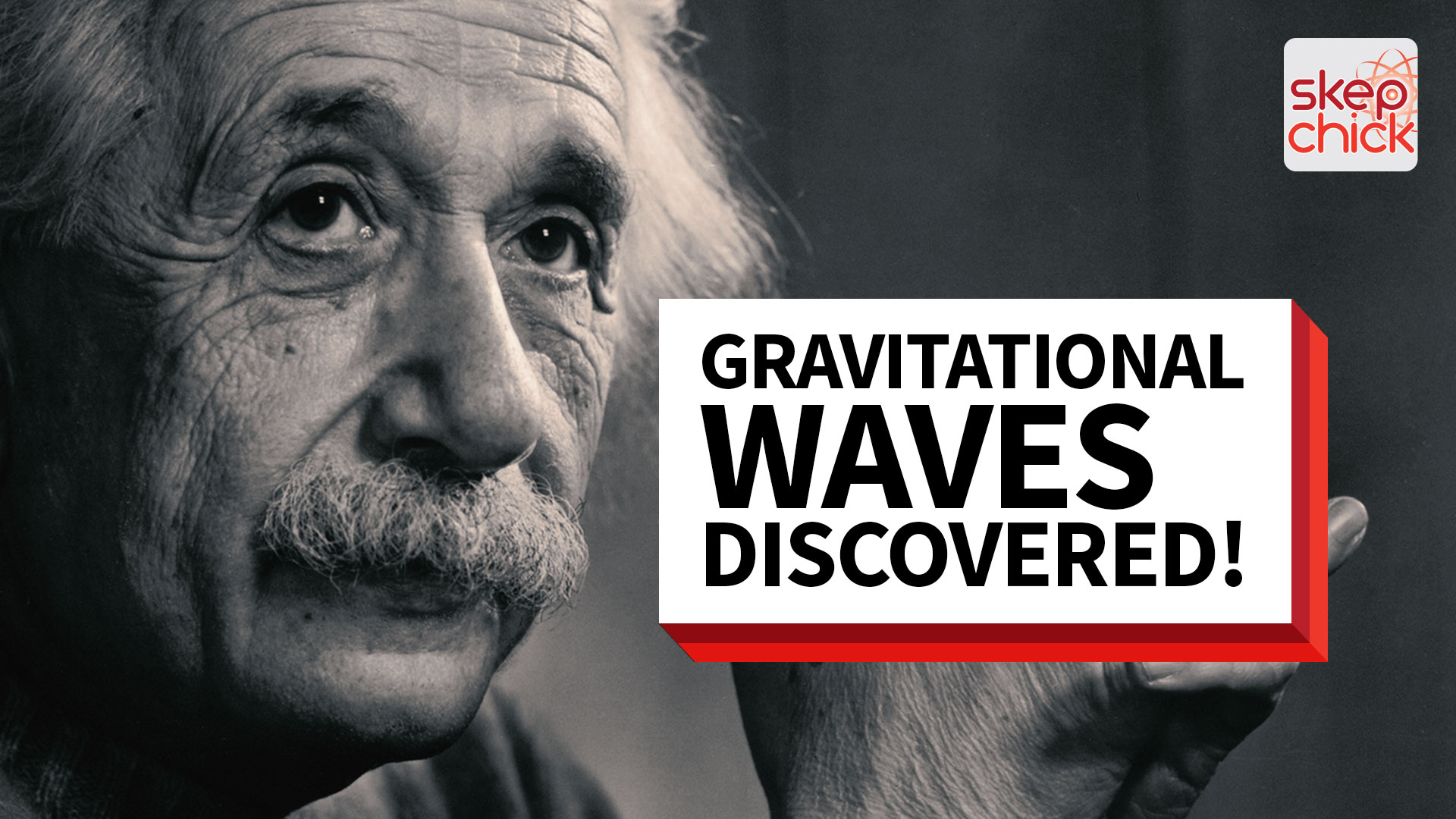Gravitational Waves Detected from 1.3 Billion Light Years Away (and the Earth is Still Round)

Support more videos like this at patreon.com/rebecca!
Sorta transcript:
After months of waiting, scientists have confirmed that all the rumors really are true: Kanye has released a new album. Also, humanity has directly detected gravitational waves from two enormous black holes smashing into one another a billion of years ago.
If you’re not sure why you should care, let me give you a painfully brief and overly simplistic overview: almost exactly 100 years ago, Einstein predicted that two objects moving around will cause “ripples” in the fabric of spacetime, like when you try to slow dance with a friend on a trampoline. The larger the objects, the bigger the ripples. But it’s such a tiny, tiny effect — imagine two ants slow-dancing on a trampoline — that for us to be able to detect it here on Earth, we need to have very, very massive objects.
Lucky for us, black holes exist. Or at least we were pretty sure they did. And when two black holes start slow-dancing, they cause ripples big enough for us to see, even though they’re 1.3 billion light years away from us.
That is exactly what happened, and scientists were able to spot it thanks to recently upgrading LIGO, the Laser Interferometer Gravity-Wave Observatory. LIGO is actually two detectors thousands of miles apart, each composed of two 2.5-mile long tunnels in the shape of an “L”. The gravitational waves were big enough to change the length of the tunnels, which is how the waves could be “seen.”
Since we’re talking about changes in the actual fabric of space, you can’t just use a tape measure to see the change, since the tape measure itself would also grow and shrink along with the tunnel. The only thing that doesn’t change is the speed of light, so scientists shoot lasers down the tunnels and measure how long it takes the lasers to reach the end. That’s how they were able to see spacetime wobbling around.
So in one fell swoop, these researchers found brand new direct evidence of black holes, merging black holes, and gravitational waves. It’s really, really amazing.
Even more amazing is that by studying the frequency and amplitude of the waves, they were able to determine the size of each black hole, the resulting size of the merged black hole, and how far away it is.
This is why it’s a bit frustrating when a significant number of people claim that the Earth is flat, or that the Universe is only 6,000 years old. Our scientific knowledge is so far beyond that that it’s embarrassing. I’m embarrassed for them. Look at what you’re missing! Not only is the universe older than 6,000 years, but you can HEAR THE SOUND OF TWO BLACK HOLES COLLIDING 1.3 BILLION YEARS AGO. On YouTube. I’ll even put the link right here on the screen so you can just click it. It’s literally never been easier to discover how weird and wonderful the universe is. Take advantage.
For more reading up on what all this means and where we go from here, I’ll put a load of good links over on Patreon. Enjoy!





At this point, it would have been far more surprising and interesting if we couldn’t find gravitational waves
If we didn’t see anything at all, we wouldn’t know if there was a problem with the instrument design, or too much noise, or we had forgotten to account for something, or the instruments just weren’t sensitive enough or if gravitational waves didn’t exist. Only the last of these would be surprising and interesting, but we couldn’t tell if it was true from lack of data.
The case you describe would be if LIGO did unambiguously see something but it couldn’t be made to match General Relativity. Then we would require new physics to explain the observations.
But what they did see matches GR superbly, and jibes incredibly well with other physics, such as a completely independent confirmation of black holes, and a very important constraint on quantum gravity theories, namely that the rest mass of the graviton (I think Kip Thorne said less than 10^-55 grams) is consistent with zero.
Buzz Parsec
True, if we just didn’t find anything thing, it could have been something wrong with the instruments.
However, what I meant was if we couldn’t find them when we should have been able to. We usually end up making interesting discoveries in science, when we don’t find what we expect. Like you pointed out, if we found something that couldn’t be made to fit general reality, someone new would have to come a long and discover new physics to explain it.